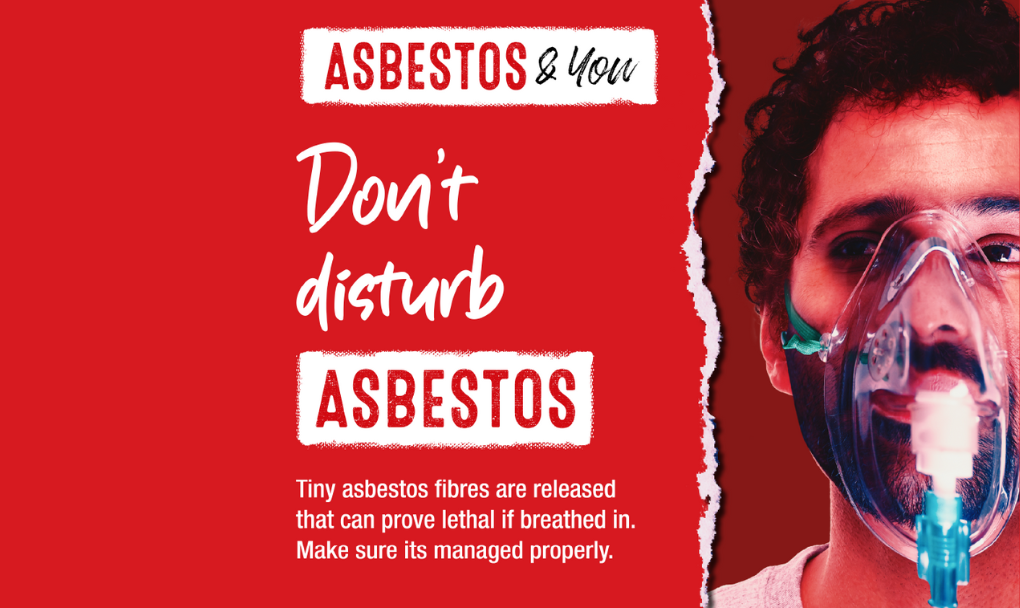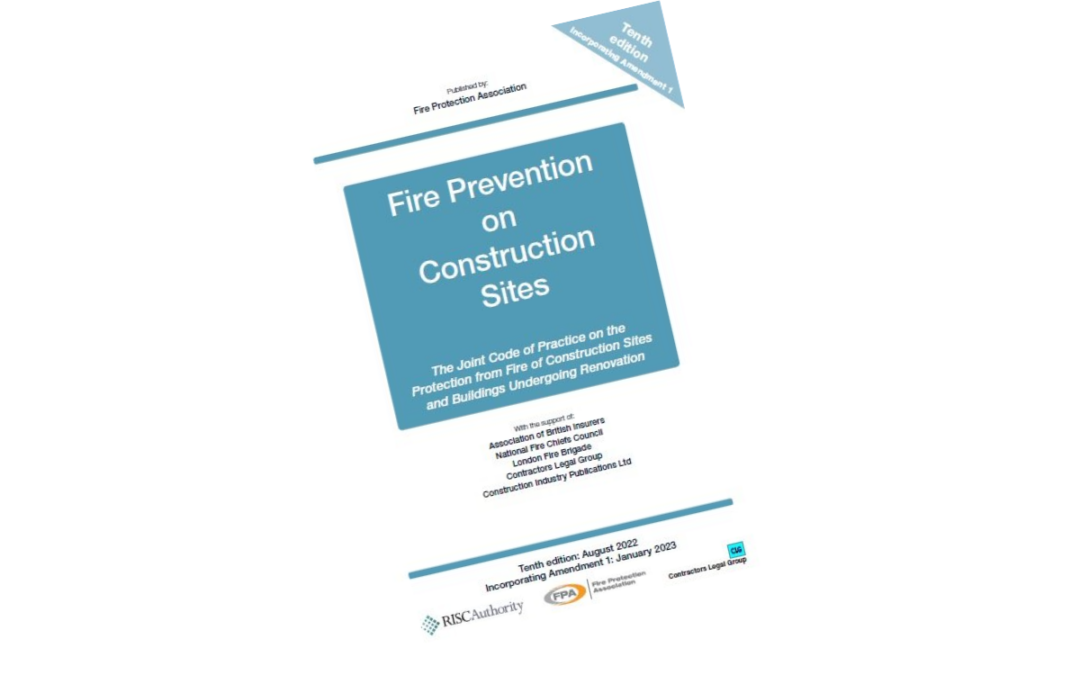
by Clair Mooney | Apr 11, 2023 | Health and Safety
The warning comes as part of the Health and Safety Executive’s (HSE) Asbestos and You campaign targeting tradespeople about the personal risks from asbestos that still exist in properties across the country today.
Around five thousand people a year die from asbestos related illnesses and asbestos can still be found in buildings built or refurbished before the year 2000. But HSE is warning despite the ban on its use, many buildings still contain asbestos, and it is still a serious risk to anyone exposed to it at any age.
Tim Beaumont, HSE’s acting head of construction policy sector, said:
“Asbestos can be found in things like Artex, cement boards under eaves, garage roofs, old bath panels, boiler houses and fires and even mortar between bricks can contain asbestos.
“There is no known safe level of asbestos exposure but that’s not to say it can’t be managed safely.
“All tradespeople should make sure they know the basics about identifying asbestos. Before carrying out any construction work, there’s a legal requirement to identify whether asbestos is present and could be disturbed.
“Younger tradespeople need to know the dangers behind asbestos as it could affect them in later life like it is affecting older tradespeople now.”
Asbestos is only dangerous if not maintained in a safe condition or if physically disturbed without the right measures in place to control exposure to fibres.
Iain McIlwee, FIS chief executive, said:
“Providing information about managing asbestos for plasterers, dryliners, ceiling fixers and all other trades working on the interior system of a building, is as important today than it ever was.
“We welcome and support HSE’s campaign ‘Asbestos & You’ to highlight that despite being banned in the UK, asbestos has not gone away. For example, removing old plaster, spray coatings on walls and beams, partition walls, loose fill insulation, textured walls, and ceilings (Artex) are still commonly found in buildings today, often when dealing with refurbishment projects.”
From the 1950s until 1999, asbestos containing materials were used extensively in the construction and maintenance of buildings in Great Britain.
When materials that contain asbestos are disturbed or damaged, fibres are released into the air. If these fibres are inhaled, they can cause serious diseases such as mesothelioma, asbestos related lung cancer, asbestosis, and pleural thickening. These diseases will not affect you immediately as they often take a long time to develop, but once diagnosed, it is often too late to do anything.
It can take 20 to 30 years before symptoms appear. Symptoms include shortness of breath, persistent cough, wheezing, extreme tiredness, pain in your chest or shoulder and in more advanced cases, swollen fingertips.
If asbestos cannot be safely managed, it should be removed by a licensed asbestos contractor. Where present, asbestos should be closely managed by those responsible for the building.
Find out more about the Asbestos and You campaign, and visit HSE’s website for further guidance on asbestos.

by Clair Mooney | Mar 30, 2023 | Health and Safety, Skills
To help improve standards, CITB in consultation with the industry, has been developing two new online fire safety courses to help improve awareness of fire safety in the workplace. Specifically developed for people working in the construction industry the course aim to provide detailed information on how to keep safe at work.
Fire Safety Awareness in Construction and the Built Environment – is available now as a FREE eCourse:
- Suitable for workers of all levels and occupations
- Basic fire safety awareness in construction and the built environment
You can find out more here.
Fire Safety in Buildings – available in the summer:
- Course created in collaboration with Working Group 2 and Build UK and FIS
- Higher level than first course, providing industry a greater level of knowledge of fire safety in buildings, following the construction stage
- Focuses on key topics such as how legislation and regulations have changed since the Grenfell tragedy

by Clair Mooney | Mar 8, 2023 | Health and Safety, Main News Feed
The Condor Collective are partnering with The FIS on Project Happiness; to better understand the metrics around topics such as mental health, retention, apprenticeships, collaboration, communication and general happiness of the people and businesses that make up the fitout sector.
The Outlook: Construction and the fit-out sector
Construction contributes £117 billion to the UK economy (6%) with 2.4 million jobs in the sector, 7% of the UK total. You are an important bunch!
According to the latest Construction Skills Network (CSN) report an extra 225,000 construction workers may be needed by 2027 to keep up with projections. This means the Greater London construction industry would have to increase current recruitment by 3,450 new workers each year to deliver expected projects, in addition to retaining its current workforce.
For the industry to meet increasing demand, it is imperative that construction leaders have useful and relevant data to inform their decisions around engagement, attraction and retention. Culture and employee engagement are crucial metrics for any construction company in the current climate.
For business leaders to be fully informed, they need access to up-to-date, sector specific benchmarking data relevant to size and location of their business. With this information leaders and employees can more accurately compare, and learn about the successes and challenges most applicable to them.
How will Project Happiness help business leaders?
The benchmark data gathered in this process will inform business leaders of engagement within the fitout sector, allowing leaders to make informed decisions on engagement and impact retention for their own teams.
All FIS members who participate & qualify* will receive their own set of results against the benchmark data.
Sample questions:
“I still see myself working at my company in two years’ time” – The data we gather around questions like this will deliver insights on an individual business’ retention, as well as loyalty & overall engagement levels in the fitout sector.
“My manager coaches me and supports my professional development.” – The data we gather around questions like this will deliver insights on career progression & development and engagement derived from purpose & mastery in the fitout sector.
“Decisions are communicated clearly and openly by the leadership team.” – The data we gather around questions like this will deliver insights on company cultures in the fitout sector and to what degree are businesses adopting modern leadership practises.
“I would feel comfortable discussing my mental health with someone at my company.” – The data we gather around questions like this will deliver insights on how individual businesses are investing in support and allow us to benchmark how well the sector is ensuring mental health support & training is a priority.
Employees, why participate?
We want to hear from as many employees working in the fitout sector as possible on topics such as engagement, leadership, learning & development, collaboration & communication in fitout companies and across the sector.
This mass data capture will provide a snapshot of how the sector approaches employee engagement, and from the insights we will be able to look at what can be improved not only to retain employees at business level, but also attract new people into fitout.
This is an opportunity for all employees to have a voice and a platform to report on how they feel their employer is performing and how they feel about the industry as a whole. The more people who participate, the clearer the picture we gain insights in to.
All employees who complete the survey before the 1/7/2023 will be entered into a draw to win a £250 gift vouchers!

by Clair Mooney | Feb 23, 2023 | Health and Safety, Technical
The Joint Code of Practice for Fire Prevention on Construction Sites was first published in 1992 with the objective of preventing fires on construction sites. Now in its 10th edition, the code has been revised and re-issued to ensure it continues to address not only long-standing risks such as hot work, but also reflects changes in standards, practice and the more prevalent use of modern materials and construction methods.
Excerpt from the Code of Practice:
“Every year there are numerous major fires on construction sites and in buildings undergoing refurbishment. All have serious consequences: people are killed and injured; buildings, including those of historic interest, are destroyed. Plant and equipment is damaged, work is held up and completion dates are not met.
The objective of this Code is the prevention of fires on construction sites. The majority of fires can be prevented by designing out risks, taking simple precautions, and by adopting safe working practices. All parties involved must work together to ensure that adequate detection and prevention measures are incorporated during design and contract planning stages; and that the work on site is undertaken to the highest standard of fire safety, thereby affording the maximum level of protection to the Building and its occupants.”
Click here to download a free copy of the latest guide

by Clair Mooney | Feb 8, 2023 | Health and Safety, Skills
National Apprenticeship Week is a timely reminder to enusre young workers are receiving the training and supervision they need. Workers are as likely to have an accident in the first 6 months at a workplace as they are during the whole of the rest of their working life.
Apprentices could be facing unfamiliar risks and are more likely to be new to the workplace. The HSE website has information on health and safety for apprentices. There is also a wide range of guidance on its young people at work website, including:

by Clair Mooney | Nov 28, 2022 | Health and Safety
he Health & Safety Executive (HSE) has released a guidance document on the provision of welfare facilities on construction sites, following frequent reports of poor hygiene and sanitation.
The guidance outlines what HSE Construction Inspectors require from building site managers. It includes their duties, information on the regulations, and guidance on interpreting standards.
The guidance document covers:
- sanitation in toilets and cleaning areas
- privacy for men and women
- adequate space, lighting, and ventilation
- how many cubicles/ urinals/ washbasins for the number of workers
Members can download guidance here.






